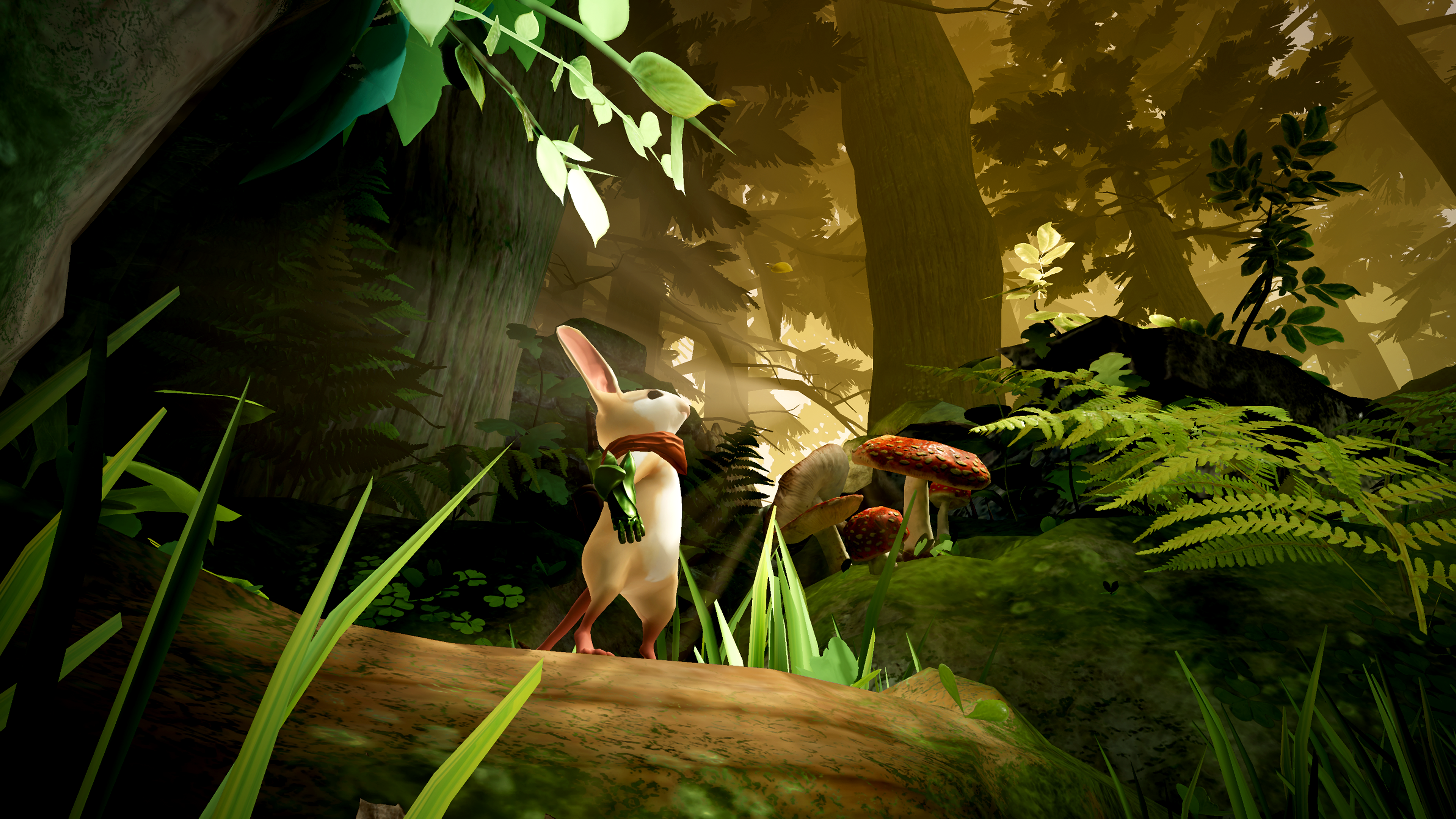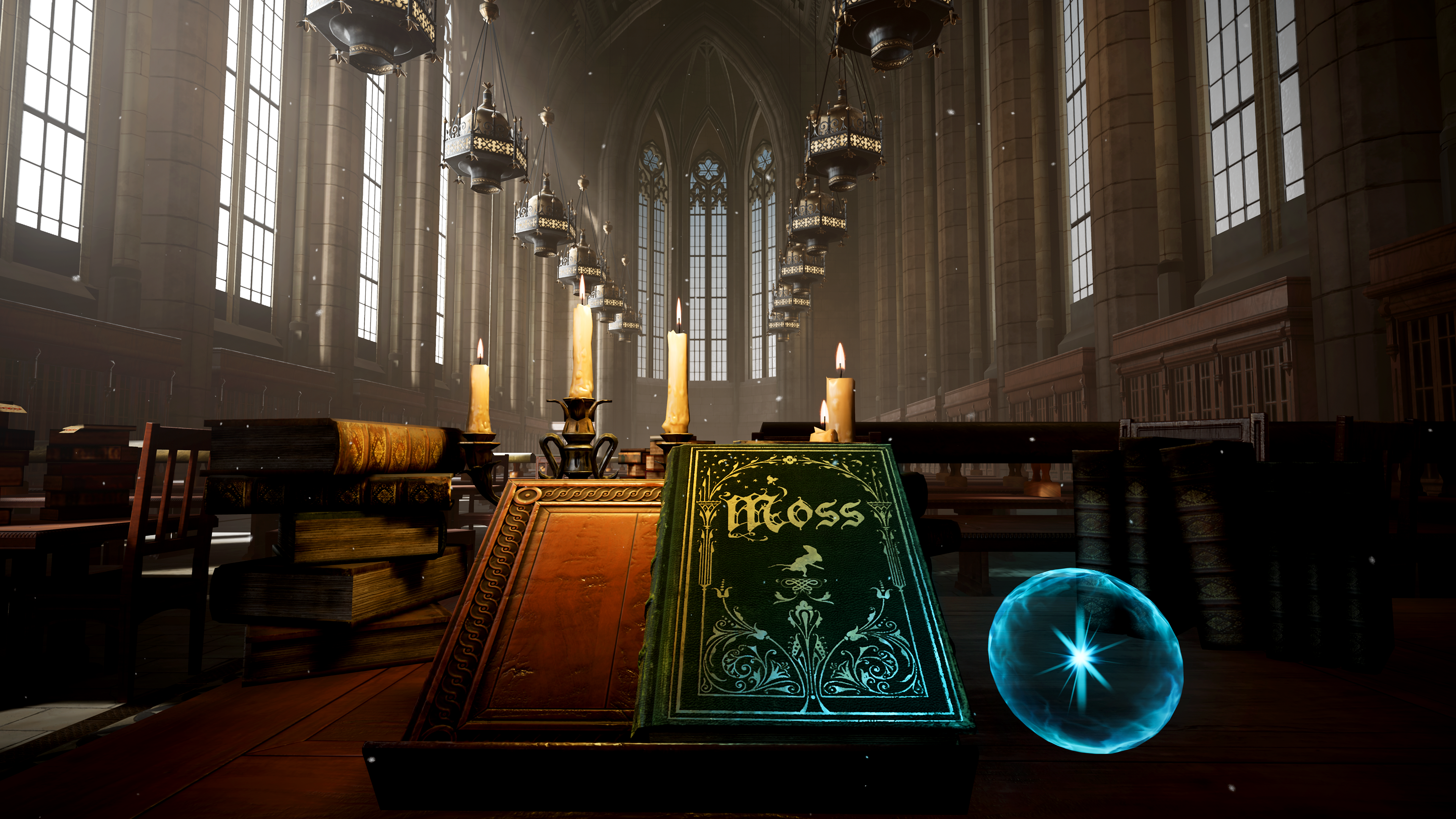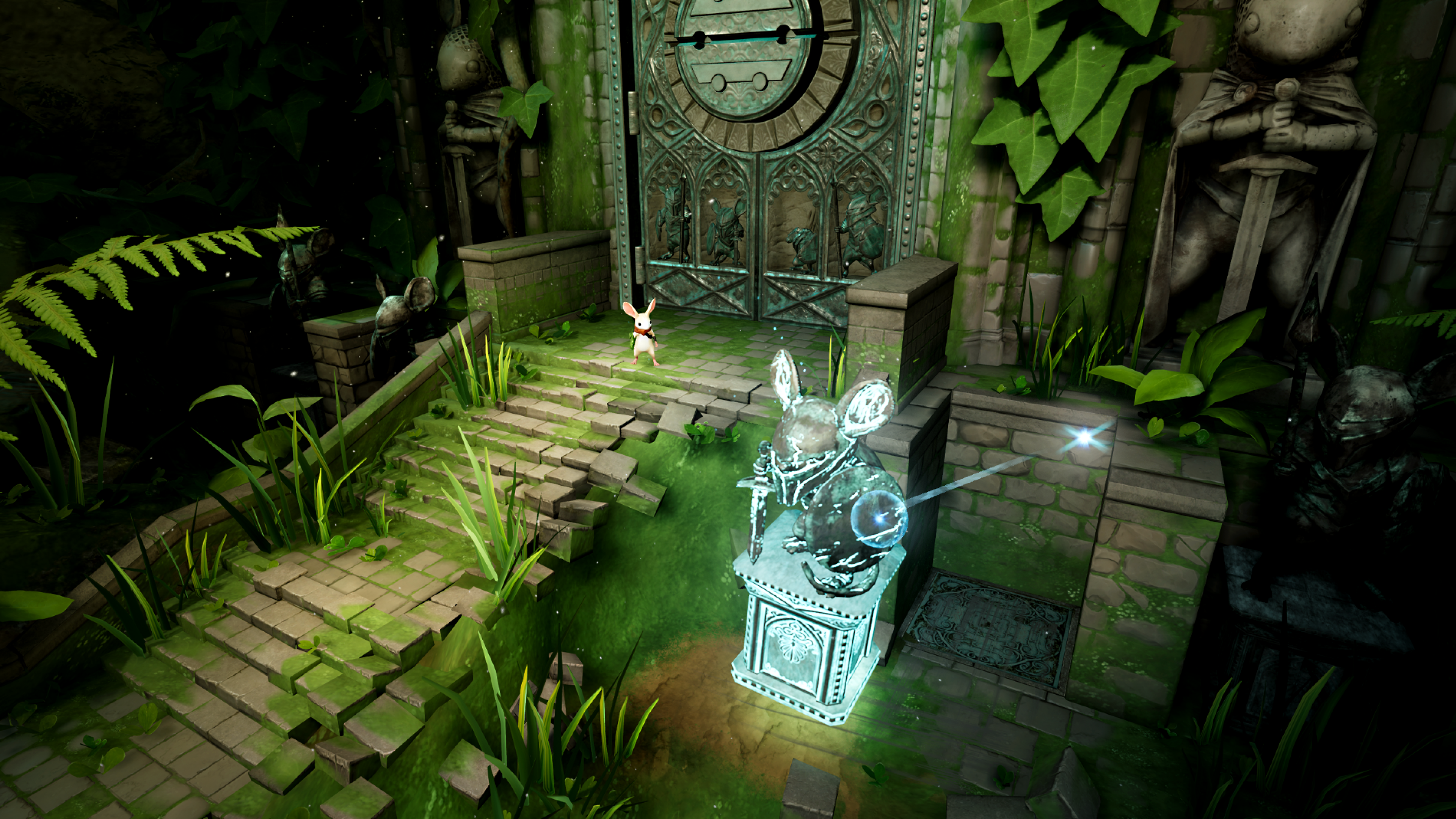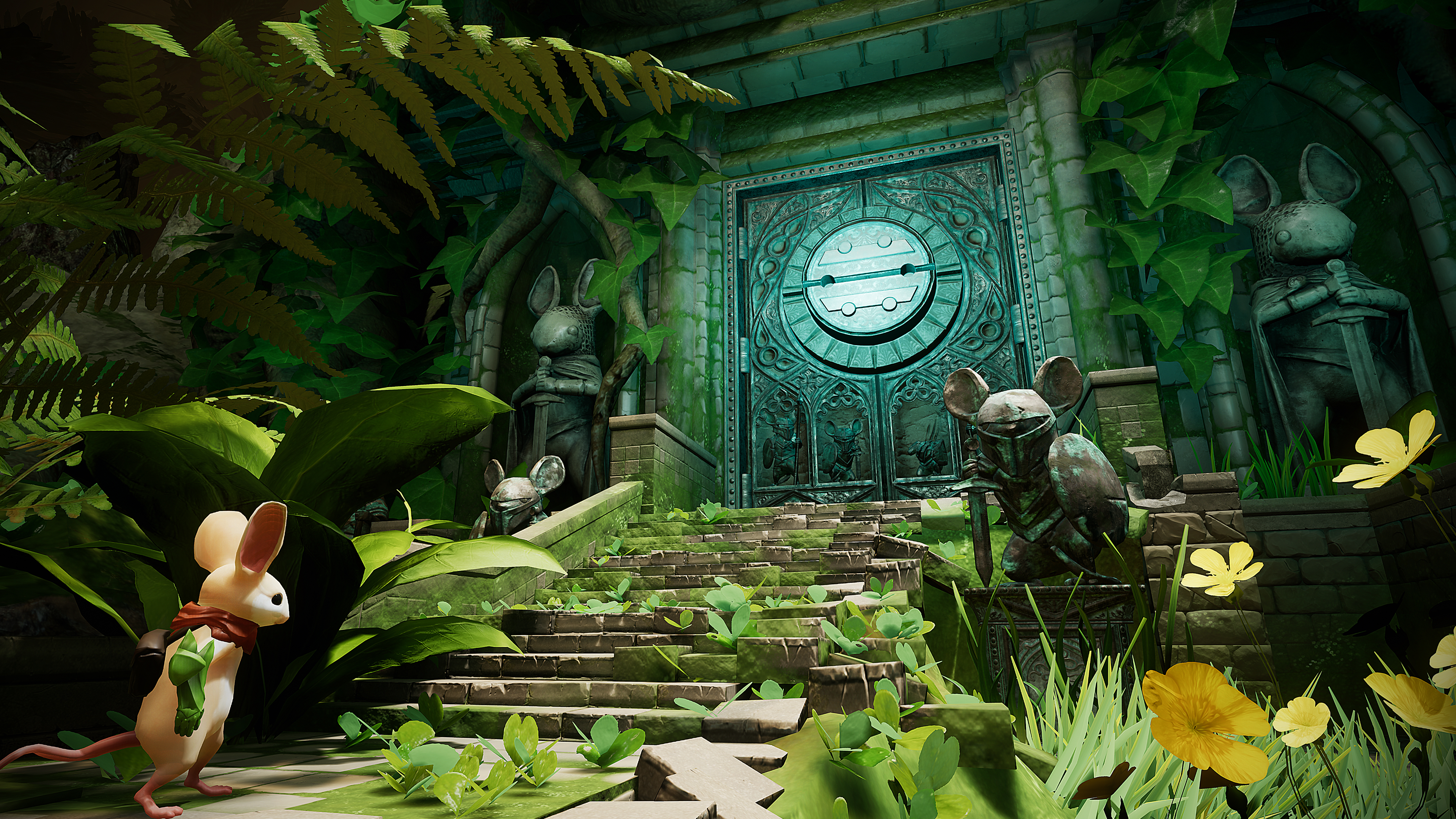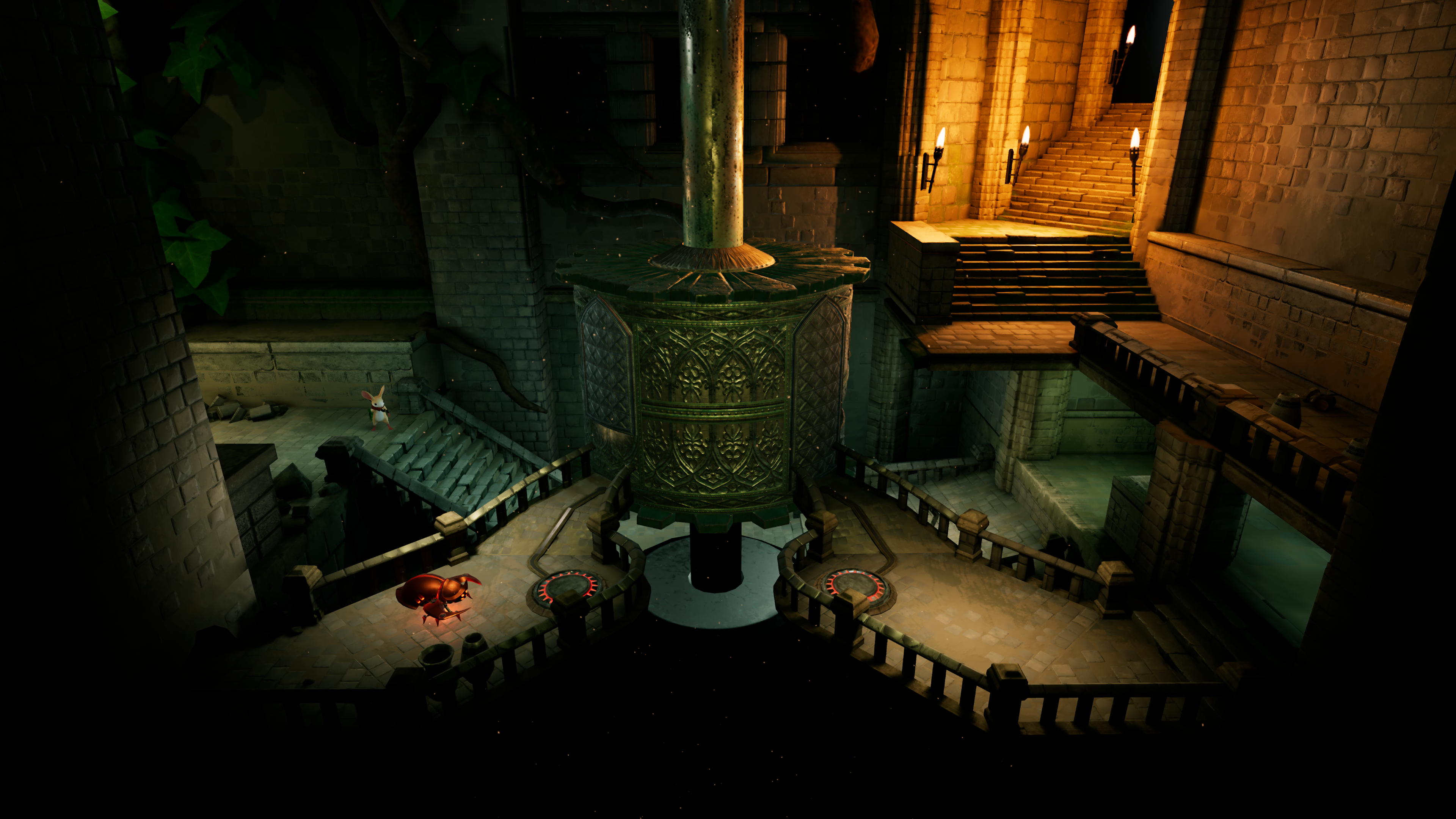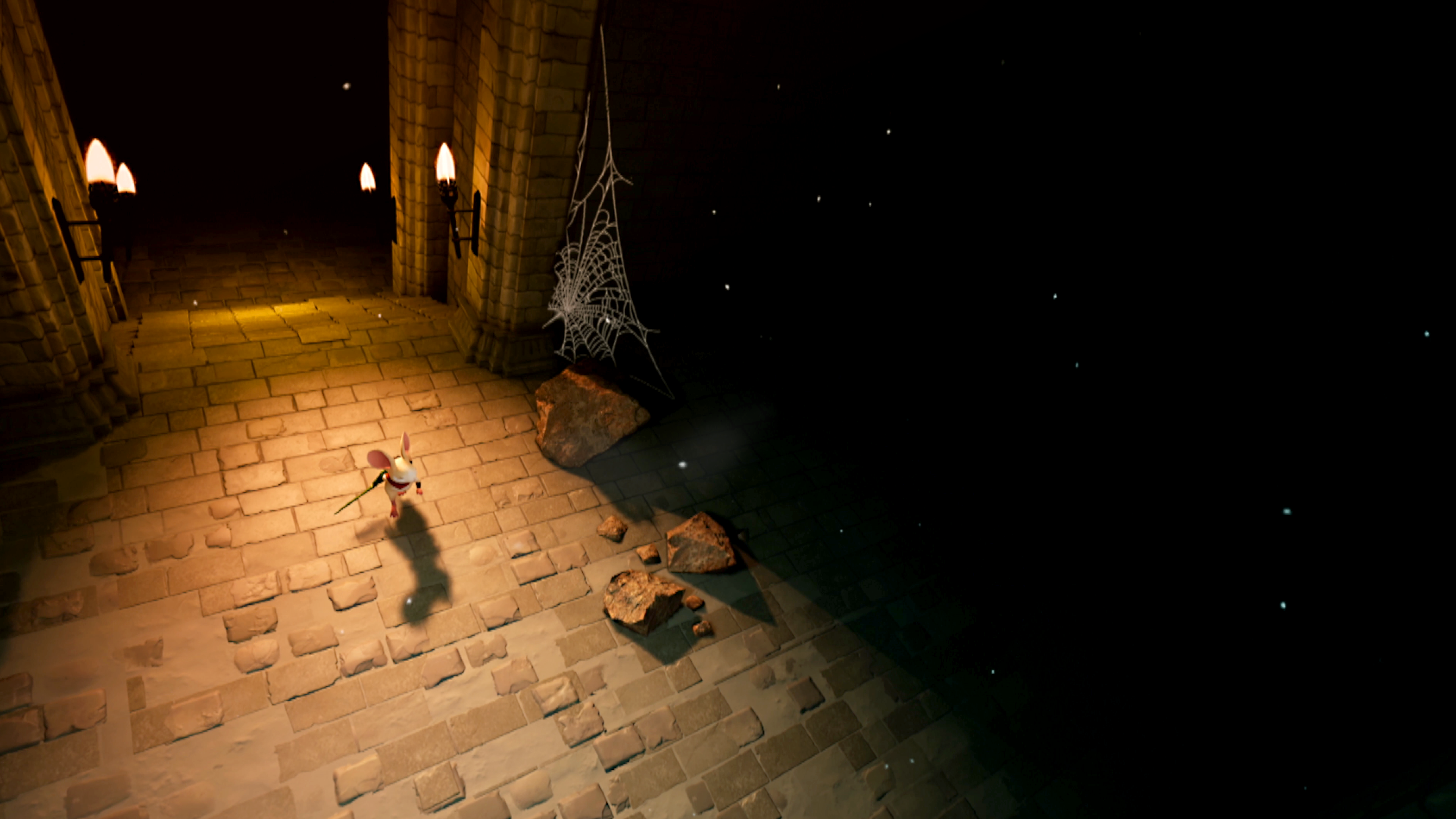Revealed during Sony's presentation at E3 2017, the upcoming PlayStation VR title Moss quickly worked its way into the hearts of viewers as it tells the story of the lovable mouse, Quill, that embarks on a grand adventure that's equal parts fairy-tale come-to-life and an emotional and immersive journey for the player.
During E3 2017, DualShockers had the chance to sit down with one of the creative minds behind Moss - Polyarc director Tam Armstrong - to discuss the creation of their world, as well as the challenges and storytelling decisions that they hope will help players fall in love with their game.
Can you introduce yourself and your role within Polyarc and with Moss?
T: My name is Tam Armstrong - I'm the Studio Director at Polyarc, also an engineer, and I water the plants.
In looking at Moss, there's this relationship throughout the story that builds between the player and Quill. Now, does the player have a name?
T: The player is called "The Reader" and that is the being that lives in this library and enters the world through these books. We want to make sure that each person that's playing this game has the capacity to map themselves onto that character, so it's actually you - the player - and your relationship with Quill.
[pullquote]We want to make sure that each person that's playing this game has the capacity to map themselves onto that character, so it's actually you - the player - and your relationship with Quill.[/pullquote]
Does that relationship evolve outside of the player's love for Quill? I feel as if The Reader can intervene, not only in the physics and the platforming: so to what extent throughout the game can The Reader impact the book of Moss?
T: That's a good question. So, the game is a tale about Quill trying to rescue a loved one. That's the basic plotline for this game, but you're going to see how the power came to be in this place - in this library - and go into the world through these books and influence the history of events that take place. That is a massive power; that's a power to affect everything. So that is very dangerous if that ends up in the wrong hands. The larger story is about Quill and The Reader and their efforts to save the world of Moss.
Where is Moss then in the scope of the world?
T: I want to be clear: this first game, this first chapter or book in this story is not that whole grand thing. This is the beginning of that and if people really like the game - which we really hope they do - we'll be really happy to make more.
[pullquote]The larger story is about Quill and The Reader and their efforts to save the world of Moss.[/pullquote]
So the world, the library, and the reader are independent of Quill?
T: Yes - so the name of the world is "Moss" and this book is the most important book in the library because it is talking about the fate of the world itself. But there are other books, with other titles, talking about other characters. So you're reading it, but you're also writing it -- it's kind of weird.
Did your team write several books and choose Moss to be the book you wanted to introduce players to first, or is this where you started from the get-go?
T: This is where we started. We started and we designed and fell in love with Quill and wanted to tell her story and make her the central character, and then we built a narrative around that, which a small portion that is included in this first game. This should be seen as a complete story: this will be about her adventure to try and save her loved one and that will be a self-contained thing: if no one takes away anything other than that story, that would be great, but we're going to do our best to hint and imply and talk about all these other things that are going on.
I got the feeling that there's several elements at play here. There's nature, something that you can't control, and industry in the form of these mechanized scarabs. Is it that the mechanized creatures are neutral and that's why The Reader can influence them? Is something like the snake beyond The Reader's control?
T: Yeah I think that's a good observation. There are some allegorical elements with "nature versus the mechanized" elements and through the course of the game, we'll discover exactly what that opposing force is: the snake is something that is allied with that force.
[pullquote]There are some allegorical elements with "nature versus the mechanized" elements and through the course of the game, we'll discover exactly what that opposing force is.[/pullquote]
So is the way you've designed all the levels so that The Reader always has a focal point in which it exists physically? Is The Reader present when you're solving that puzzle? To put it simply: is Quill the only one that is aware of your presence?
T: I think that will remain to be seen from the story. Quill is certainly aware of your presence and the degree to which the other inhabitants of the world are aware probably varies depending on who we're talking about.
You've talked about playtesting and wanting users to overcome this entry point in VR and tell a story. Besides controls, what did you have to change the most to make Moss? Because Moss could've existed without VR as a platformer - but in choosing to make it a VR experience, what were some of the challenges and benefits as you see them?
T: Absolutely - so the design of the game derived from our development of what we believe are the first principles of good game design in VR. Comfort is a big one; physical interaction is huge, and a true sense of being there – a true sense of immersion is very important. We made very specific decisions that very dramatically affected the game design along the way for each of those principles.
For comfort, that is the reason why you move from scene to scene instead of sliding the camera through which means we had to go back to cues from some classic games like LucasArts adventure games where a character enters a scene on one side and exits on the other. There's even some interesting problems there about player expectation: when you leave a scene at a certain direction or a certain height, where do you expect to see the character next time? And there's things there about framing: what objects do we put in the foreground and how do we darken them but still make you feel surrounded so that you still feel like you're in the place instead of just looking at it? We started with comfort, and then all that other stuff came as the conclusions.
[pullquote]It's not necessarily easy to make sure that every scene you're in has something for you to do, but when you do that right it feels really good.[/pullquote]
The physical interaction – it's so compelling, it's so intuitive. We destroyed barriers of abstraction with input when you can just reach your hand in and grab things. It's not a matter of hitting a prompt anymore; you want to move a thing and you put your hand on it, and you grab it and you move it. That feels really good and it makes it really fun and we had to weave those interactions through every moment in the game. It's not necessarily easy to make sure that every scene you're in has something for you to do, but when you do that right it feels really good.
And then lastly, the immersion elements: having everything react to you and having Quill know that you're present and see you there, it's all designed to draw you in. That's all stuff that you can technically do in some fashion with a cursor or a character looking at a camera, but it doesn't work the same way. There are definitely brand new elements of VR design, but there are also a lot of other elements they were more or less important in 2D game design and that graph – that chart– of what is now more important is just shifted around, and recognizing that is how you take advantage of these things.
Does Moss take influence from anything besides "The Hero's Journey" or is it derivative of anything?
T: I think we are all a product of our childhood influences in particular and one of my personal tests when I am working on something is that I really do ask myself: "Would this small un-jaded version of me fall in love with this?" I think that when you think that way, you will inadvertently always end up at least somewhat referential and I don't think that's bad. I think that what we're trying to do is pay our respects to those references while bringing something new into it, and making something that is wholly original.
I think that something you guys have succeeded in doing is creating a character in a universe that doesn't have a target audience. You've said VR is something that's hard to bridge into, but even harder if you make a VR game that's only for gamers. This is something I think poses a challenge, because the puzzles took me a while - but at the same time, I could imagine a child or an older person looking at this game and because the controls are so simple, they can actually engage with it. Is this something you think you're doing right?
T: We want to tell a genuine story and we think that that is the surest way to engage all audiences, and we want to take our subject matter seriously because everybody wants respect: when you respect your players and your audience, they appreciate it.
There are elements in there that kids can enjoy and elements that adults can enjoy, and we take it all seriously. We think about our choices with the music: it's not accidental that the music is serious and somewhat somber, even though there's a tiny little mouse hero running around. That's all important because that - we're hoping - is what ends up allowing the larger number of people possible to enjoy it, because that's what's ultimately the goal. We made something that we love and we think is cool, and we would like to share it with as many people as we can.
[pullquote]We made something that we love and we think is cool and we would like to share it with as many people as we can.[/pullquote]
When can players expect to be able to experience Moss?
T: We're aiming for winter of this year.
And in terms of a price point?
T: It's TBD. I can sort of back into the answer by saying that we're expecting it to be a couple to a few hours of content. We're going to try really hard to be honest with ourselves about what we think it's worth, and that's part of the reason we're an independent studio: we have the capacity to make decisions like that.
Thank you so much for answering my questions! Lastly, in terms of a multiplayer experience, an antagonist Reader...
T: We'll see!
Moss is currently in development for PS4 and PlayStation VR, and is expected to release in Holiday 2017. For more info on the title, you can also check out our in-depth, hands-on preview of the game from E3 2017.

